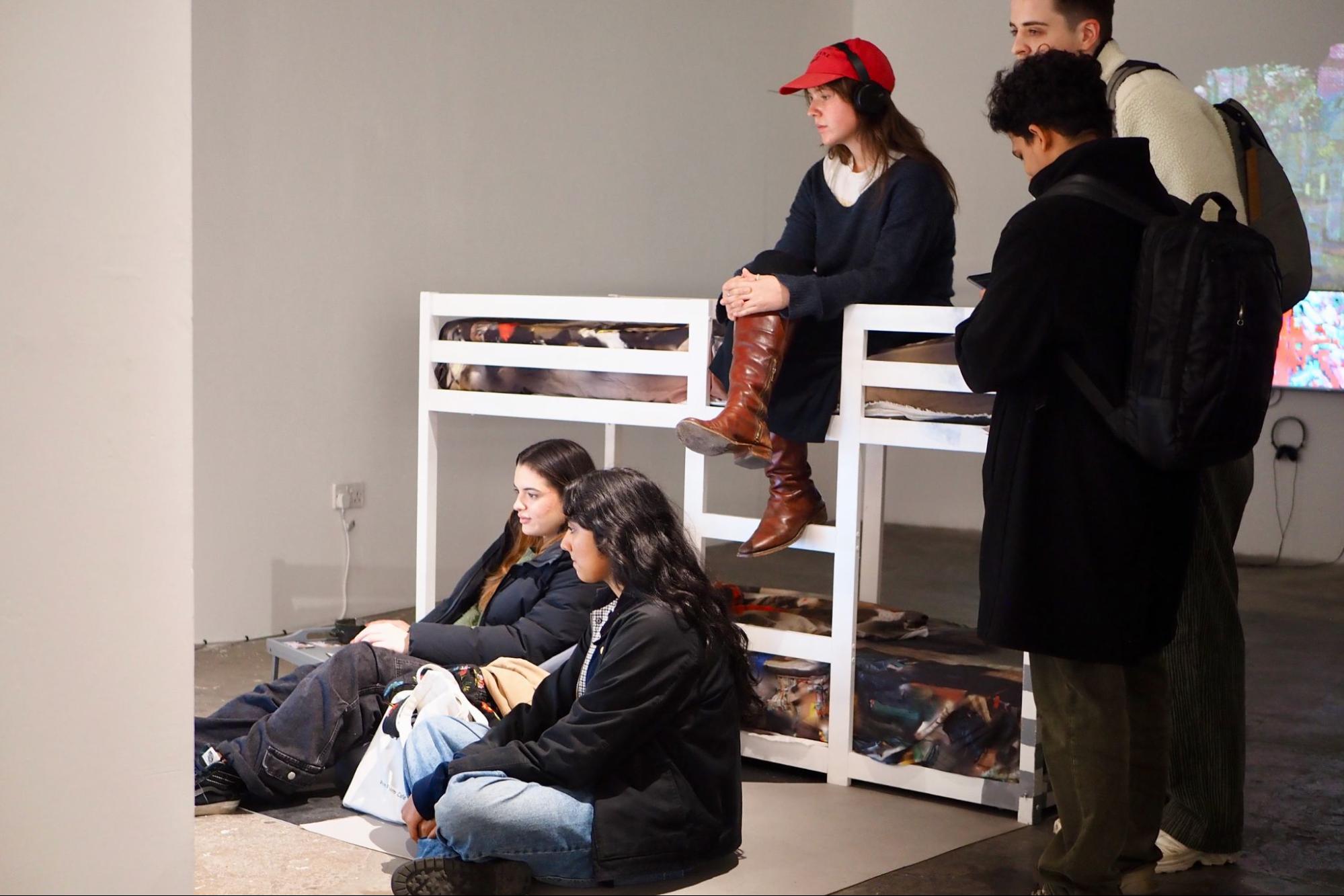What is home to us? And how does that change if we’ve moved around the world, always relocating and settling in new places? Plus, how do we convey that to others so that they can experience what we’ve been through? It’s hard to do this through a stationary medium such as painting or photography. For artist Melissa / Yunzhi Li, the solution lies in the digital realm, as she has created worlds for us to navigate that reflect her lived experiences.
In her online work ‘Home is a Dwelling Path’, we can navigate between different buildings and images that all represent different memories of displacement. As we navigate the space, we hear personal recollections from various individuals about the meaning of home. Some reflect on having a safe space to decompress or be with family, while others reflect on how reconnecting with childhood friends always feels like no time has passed since you last saw each other. Each one is a personal memory, but they share a universality that evokes feelings that resonate with most of us.
The work reminds me of Do Ho Suh, who recreates memories of different architectures in fabric and splices them together so we can walk through them in a gallery. Li’s work feels like a digital version of a similar concept, though instead of keeping it personal, she has opened it to many more people, reflecting on how displacement can feel personal. Still, it impacts millions of people – all in slightly different ways.

Flickring Home is another browser-based artwork by Li that reflects on what home means through a room that evolves with publicly sourced images on Flickr tagged with home, so this space becomes everybody’s home. There’s a strong community element to this work that’s vital to ensuring contemporary art remains open to everyone.
The digital realm also offers endless opportunities to create artworks. Contemporary art has been slow to adopt the digital, given that people have been creating worlds on platforms like Minecraft for many years. However, art must reach audiences through these platforms, given how much of our time we spend on screens. This message has been heard by institutions such as Tate and Serpentine, which now have extensive digital programmes.
Historically, artists have always been quick to adopt new technologies. In the 1970s, the Fluxus movement, particularly the work of Nam June Paik, was among the earliest uses of film as a medium for video art, and art is always looking to push new boundaries. With contemporary discussions around how the future may be in the metaverse, it feels like Li’s work is capturing the zeitgeist of our time, and in some ways, it may be ahead of it.

As technology evolves and becomes more accessible, I would be interested to see how Li’s work takes on other media, such as augmented and virtual reality, to create more immersive iterations of her works.
I spoke to Li, and the questions below provide further insight into her artworks and wider practice:
You have personal experience of displacement. How does that manifest in your work?
I was born in Chengdu, China, then moved to Tbilisi, Georgia, and now live in London, United Kingdom, so I have definitely experienced changes between rooms, languages, and cultures. In a broad sense, my art practice sits between computation and installation: I build participatory systems in which images, code, and audience input shape the work in real time. I’m interested in how personal and public travel, and how technology changes what they mean. Displacement enters less as autobiography in my work and more as a working principle: fragmentation, translation, and co-authorship. In Home is a Dwelling Path that shows up as stitched, collaged-like spaces from stories not from me, but from people around me: 3D-scanned objects, reconstructed buildings, textures from personal photos and public archives.
What does home mean to you, and how is that reflected in your work?
In a way, the piece is my quest to find my own home, which I found difficult to define. To me, now, home is less a destination than a route: a path you keep walking, carrying things that matter. I borrow from Ursula K. Le Guin’s Carrier Bag Theory of Fiction, Georges Perec’s Species of Spaces, and Rebecca Solnit’s The Faraway Nearby: the domestic as a container for stories, not a fixed blueprint. In the work, “home” is assembled from narrated memories: a bowl, a smell, hanging out with friends. Things drift and overlap, objects float in the air and are submerged in water. The digital space aims to be ever-expanding, new stories will be told, new sceneries will be added, so the piece is never finished; it keeps migrating as people do. That mix of remembering and forgetting, of care and choice, is how I understand home: provisional, relational, and always under edit.
Why build a navigable experience online rather than use more traditional media?
Because the idea itself is navigational and collective, a single image or wall text can’t capture how memory branches, contradicts, and recombines. A web-based world lets people move non-linearly, follow their own threads, and, crucially, participate, adding stories and seeing them remap the space. Additionally, having it online aligns with my intention for the piece, as it can be updated and expanded whenever possible. It’s also about access: browser access means someone across the city or across the globe can still wander the world. The web is the everyday archive we all use; letting online images literally skin the rooms makes the medium part of the message.
More information about Melissa / Yunzhi Li’s work can be found on her website and on Instagram.

